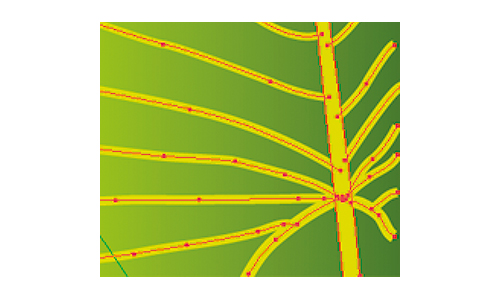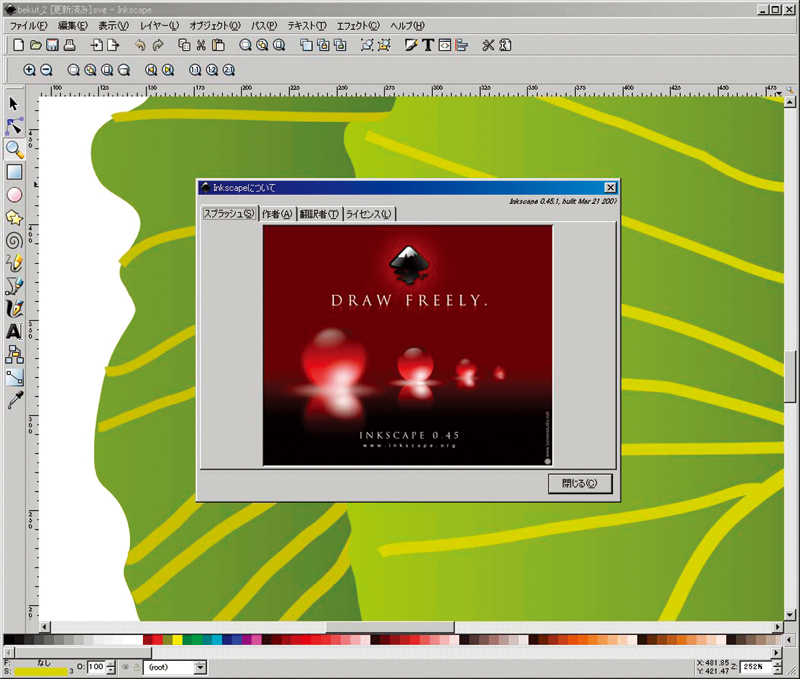Vector Data
ベクターデータ
Vector Data
CATEGORIES
Vector graphics data describe shapes in a multidimensional space as coordinates and functions of shape attributes. They are primarily used in applications of the “draw” variety (e.g., Illustrator from Adobe Systems and the open source software Inkscape) and the CAD variety.
Vector graphics data have a number of special features: graphing and editing using the properties of the shapes, as in spline interpolation, parametric transformation, tangential arc processing, and intersection calculation, are possible; in principle, numeric definition based on intrinsic dimensions is also possible (though in practice, this would require implementation by an application); and character and shape data are preserved and do not deteriorate during the editing process. Because of these features, vector graphics can also be used in downstream processes such as the creation, processing, and integration of that sort of data.
The primary characteristic of vector graphics data is its ability to achieve high-quality output regardless of size or magnification because it is rasterized (RIP: RasterImage Processing) based on the output device’s resolution each time a drawing is done (on a screen or by a printer or imagesetter). One disadvantage is the fact that the quality is dependent on the output device, creating the possibility that unexpected results will occur because of differences in the RIP processing capacity or in the interpretation of drawing information. It is important to remember to produce test output after any application upgrade or change in output device, but even more essential to convert to easy-to-use data (such as a conversion of font data to outline format.) From the perspective of data conversion, because file formats are usually proprietary and dependent on a given application, environments must necessarily be constructed in compliance with upstream processes, making it difficult, out of considerations over effective utilization of old data, to change applications once one has been adopted. Data size can be difficult to estimate because it is only minimally correlated with drawing volume. Adobe Systems’ PostScript is well known as a vector page description language, but many “draw” variety applications are also able to produce output in this format. CAD applications use a number of specialized vector formats such as HP-GL for large-format printers and plotters, Excellon for CAM, and Gerber (RS-274D, RS-274X) for laser drawing devices.



